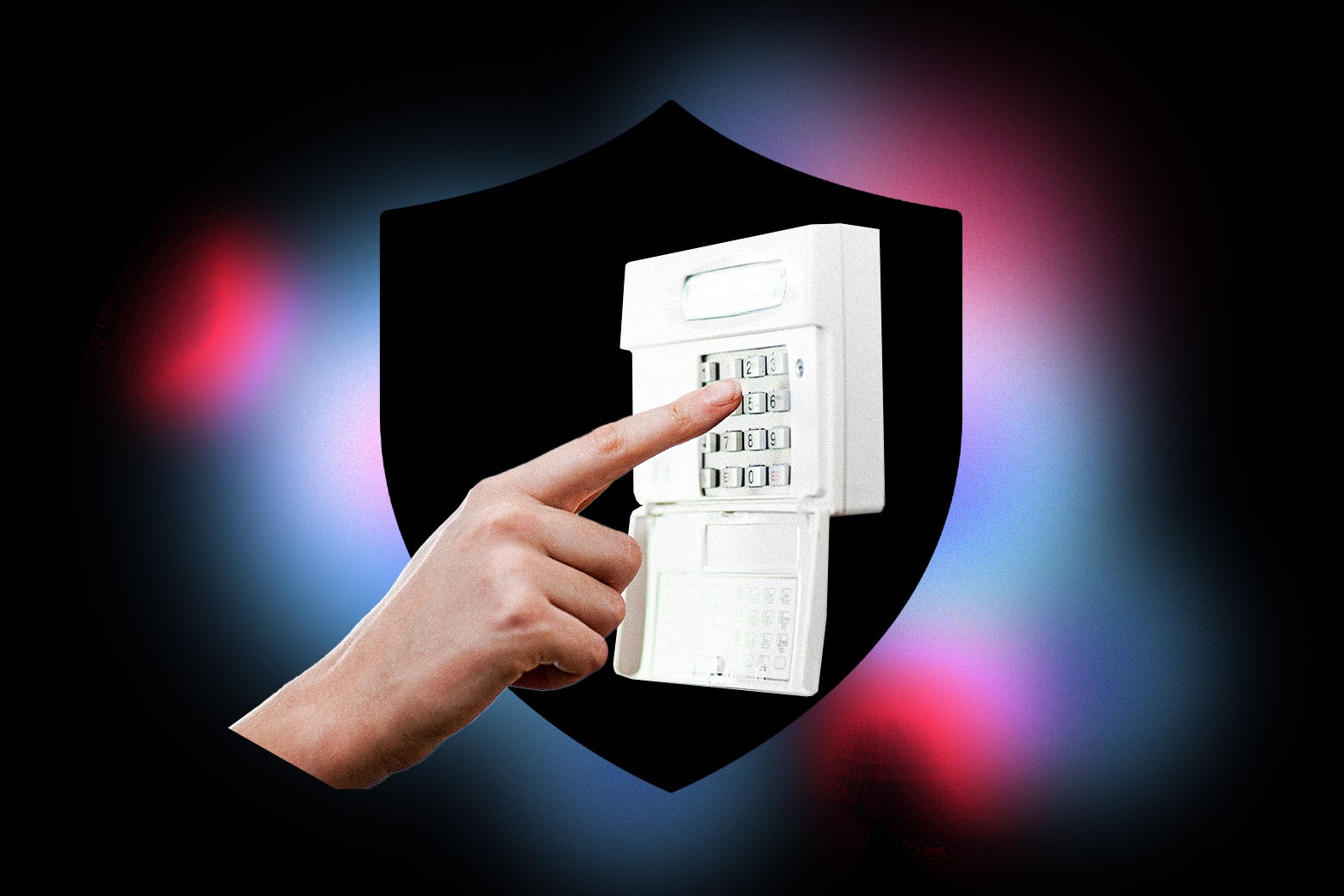If you’re among the 39 million U.S. households protected by a monitored home security system, chances are you’ve triggered a false alarm or two. What you might not know is that nearly all security system–related alarms are false alarms—as many as 98 percent, according to the International Association of Chiefs of Police. These occur because of faulty equipment, pets, insects, bad weather, and, most commonly, user error.
The number of false alarms has, for decades, been a source of frustration for police departments who feel they shouldn’t have to make up for poorly installed alarm systems or homeowners who weren’t properly shown how to use them. It’s “sown distrust and created a lack of urgency for police departments nationwide,” says Timothy Dimoff, a 40-year law enforcement veteran and a former detective in the Akron, Ohio, police department.
Los Angeles Police Department public information officer Jeff Lee says that in 2023 alone, the LAPD received 65,369 alarm-related calls—a staggering expenditure of resources the department has precious little to show for.
He says that several things determine how quickly the LAPD and other departments respond to an alarm trigger, including officers being tied up elsewhere, the time of day the alarm takes place, and whether anyone is in danger.
Smaller cities also commonly receive a faster response time, while medium cities “take an average of 40 minutes,” says Don Chon, a professor of criminology at Auburn University in Montgomery, Alabama. In larger cities it could take several hours for police to respond, if they respond at all.
In fact, most police departments “have deprioritized unverified alarm activation calls,” says Jeff Zisner, a 20-year home security consultant based in California, and many departments won’t reply at all unless a verification occurs. That’s where, after an alarm has been triggered, the security company contacts the homeowner or uses video or audio surveillance to confirm that an intrusion has indeed occurred.
“Our practice is to not respond to any alarm calls unless they’ve first been verified, which rarely happens,” says a Utah-based police lieutenant who requested anonymity because he didn’t have department authorization to talk with me.
Because of this, he says alarm owners are “flat out of luck” if they don’t have a camera or microphone in the same room a burglar is in or if they’re away from home when the alarm company calls. In most departments, violent crimes where people are in danger get the fastest response, while property crimes usually get the slowest.
“Here, a triggered alarm is classified as a Level 4 priority while Level 0 would get an immediate response,” explains Jay Casillas, a public information officer of the Denver Police Department.
Put another way, “we have so much going on that we treat break-ins with about as much urgency as a bicycle being lifted off a sidewalk,” says a police captain in Detroit, who spoke with me on condition of anonymity.
And yet, companies like Ring and others use taglines such as “help is on the way” in marketing materials, and an army of door-to-door sales reps that descend upon suburban neighborhoods each summer make promises to would-be customers about how quickly police are likely to respond in the event an alarm is triggered.
“There are 18,000 police departments in the United States, and nearly all of them are shorthanded and thereby unable to guarantee a response to each and every alarm,” says lieutenant Travis Norton, a 25-year police veteran and former SWAT commander from Southern California. “And if we can’t guarantee a response, there’s no way alarm companies can or should be making promises on our behalf.”
Home Security Isn’t All It Appears to Be
The $12 billion North American home security market—which includes companies like ADT, Brinks Home, SimpliSafe, Ring, and Vivint—has experienced massive, continuous growth, “and law enforcement simply can’t keep up with the number of new alarm systems being installed,” says Norton.
That’s likely to only get worse as the industry doesn’t show signs of slowing. One analysis has the market reaching close to $50 billion by the end of 2032, and Russ VanDevanter, former owner of a large U.S. home security company and a 53-year veteran of the industry, says that growth is mainly occurring through companies prioritizing profits over real protection of their customers. “The industry has been rendered ineffective by the monopolistic actions of the big international players,” he says. He adds that things aren’t going to improve unless people learn the truth about the quality of security they are actually purchasing and unless alarm companies become more transparent about their operations.
For instance, most homeowners who purchase an alarm from a door-to-door sales rep are unaware that they may be entering into a three-to-five-year contract with a different company than the one that will be fulfilling that contract.
Howard Levinson, a 40-year veteran of the home security industry who has supervised many alarm-monitoring call centers, explains that several of the larger companies outright buy thousands of contracts from summer pop-up door-to-door alarm companies, called “dealers,” or those smaller companies instead choose to outsource the monitoring portion of the business. “So, a customer might be paying $60 a month to the company who installed their security system, but that company is paying a different company $17 a month to do all the monitoring for them,” he says.
That means shortcuts can be taken when the equipment is installed, since the company installing it will be different than the company monitoring it. “I’ve seen cases where vulnerable areas of a home were left unprotected, motion detectors were installed upside down so pets wouldn’t set them off, and whole zones weren’t noted on the paperwork a monitoring center would need to adequately monitor the premises,” he says.
All of this leaves homeowners at the mercy of a monitoring station where staff may or may not be capable of interpreting an emergency in the event of a break-in.
How Self-Monitored Systems Are Changing the Game
This isn’t to say that traditional home alarm systems are a waste of money. Research shows that 60 percent of would-be burglars are deterred by even the presence of an alarm. A monitored system could also add value to a home and can help lower insurance rates.
What’s more, Ring, SimpliSafe, Vivint, and Brinks Home all provided statements or interviews for this story, each showing that their home security systems can indeed protect their customers and help homeowners at least feel protected. “We are proud to offer comprehensive whole-home security systems that provide our customers added peace of mind and security,” says a Ring spokesperson.
Vivint chief operating officer Dave Porter says his company also works to limit the number of false alarms, in part by providing “a reasonable timeframe during which customers can easily disarm the system and cancel an alarm prior to the call-verification process beginning.”
But with the advent of smart technology, VanDevanter says most people no longer need monitoring stations to play the middleman between their home security equipment and the police, nor do they need the accompanying high monthly price tag.
He says you can install security equipment yourself or pay a professional a one-time fee to do so, then enable push notifications on the corresponding security system app to let you know when a sensor gets triggered.
Companies like Ring and SimpliSafe are already helping homeowners capitalize on such opportunities, as the majority of the equipment and cameras they sell are for self-monitoring purposes—though they do offer central monitoring options as well.
“If you suspect a break-in,” Levinson says, referring to people monitoring their own equipment, “you can notify the police yourself and they’ll likely be a lot more responsive to you than an alarm company anyway.”











